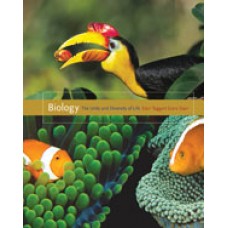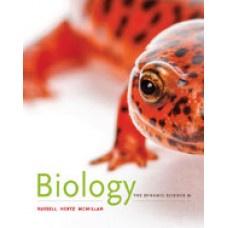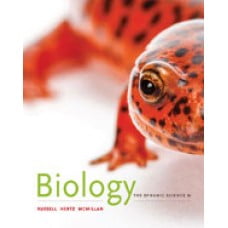Test Bank for Life: The Science of Biology, 8th Edition: David Sadava
$35.00 Original price was: $35.00.$26.50Current price is: $26.50.
Test Bank for Life: The Science of Biology, 8th Edition: David Sadava
Instant download Test Bank for Life: The Science of Biology, 8th Edition: David Sadava pdf docx epub after payment.

Product details:
- ISBN-10 : 1429214449
- ISBN-13 : 978-0716776710
- Author: David E. Sadava; H. Craig Heller; Gordon H. Orians
Co-published by Sinauer Associates, Inc., and W. H. Freeman and Company. Visit theLife, Eighth Edition preview site. LIFE HAS EVOLVED. . . from its original publication to this dramatically revitalized Eighth Edition. LIFE has always shown students how biology works, offering an engaging and coherent presentation of the fundamentals of biology by describing the landmark experiments that revealed them. This edition builds on those strengths and introduces several innovations.
As with previous editions, the Eighth Edition will also be available in three paperback volumes:
• Volume I: The Cell and Heredity, Chapters 1-20
• Volume II: Evolution, Diversity and Ecology, Chapters 1, 21-33, 52-57
• Volume III: Plants and Animals, Chapters 1, 34-51
Table of contents:
PART I THE SCIENCE AND BUILDING BLOCKS OF LIFE 1 Studying Life 1.1 What Is Biology? 1.2 How Is All Life on Earth Related? 1.3 How Do Biologists Investigate Life? 1.4 How Does Biology Influence Public Policy? 2 The Chemistry of Life 2.1 What Are the Chemical Elements That Make Up Living Organisms? 2.2 How Do Atoms Bond to Form Molecules? 2.3 How Do Atoms Change Partners in Chemical Reactions? 2.4 What Properties of Water Make It So Important in Biology? 3 Macromolecules and the Origin of Life 3.1 What Kinds of Molecules Characterize Living Things? 3.2 What Are the Chemical Structures and Functions of Proteins? 3.3 What Are the Chemical Structures and Functions of Carbohydrates? 3.4 What Are the Chemical Structures and Functions of Lipids? 3.5 What Are the Chemical Structures and Functions of Nucleic Acids? 3.6 How Did Life on Earth Begin? PART II CELLS AND ENERGY 4 Cells: The Working Units of Life 4.1 What Features of Cells Make Them the Fundamental Unit of Life? 4.2 What Are the Characteristics of Prokaryotic Cells? 4.3 What Are the Characteristics of Eukaryotic Cells? 4.4 What Are the Roles of Extracellular Structures? 4.5 How Did Eukaryotic Cells Originate? 5 The Dynamic Cell Membrane 5.1 What Is the Structure of a Biological Membrane? 5.2 How Is the Plasma Membrane Involved in Cell Adhesion and Recognition? 5.3 What Are the Passive Processes of Membrane Transport? 5.4 How Do Substances Cross Membranes Against a Concentration Gradient? 5.5 How Do Large Molecules Enter and Leave a Cell? 5.6 What Are Some Other Functions of Membranes? 6 Energy, Enzymes, and Metabolism 6.1 What Physical Principles Underlie Biological Energy Transformations? 6.2 What Is the Role of ATP in Biochemical Energetics? 6.3 What Are Enzymes? 6.4 How Do Enzymes Work? 6.5 How Are Enzyme Activities Regulated? 7 Pathways That Harvest Chemical Energy 7.1 How Does Glucose Oxidation Release Chemical Energy? 7.2 What Are the Aerobic Pathways of Glucose Metabolism? 7.3 How Is Energy Harvested from Glucose in the Absence of Oxygen? 7.4 How Does the Oxidation of Glucose Form ATP? 7.5 Why Does Cellular Respiration Yield So Much More Energy Than Fermentation? 7.6 How Are Metabolic Pathways Interrelated and Controlled? 8 Photosynthesis: Energy from Sunlight 8.1 What Is Photosynthesis? 8.2 How Does Photosynthesis Convert Light Energy into Chemical Energy? 8.3 How Is Chemical Energy Used to Synthesize Carbohydrates? 8.4 How Do Plants Adapt to the Inefficiencies of Photosynthesis? 8.5 How Is Photosynthesis Connected to Other Metabolic Pathways in Plants? PART III HEREDITY AND THE GENOME 9 Chromosomes, the Cell Cycle, and Cell Division 9.1 How Do Prokaryotic and Eukaryotic Cells Divide? 9.2 How Is Eukaryotic Cell Division Controlled? 9.3 What Happens during Mitosis? 9.4 What Is the Role of Cell Division in Sexual Life Cycles? 9.5 What Happens When a Cell Undergoes Meiosis? 9.6 How Do Cells Die? 10 Genetics: Mendel and Beyond 10.1 What Are the Mendelian Laws of Inheritance? 10.2 How Do Alleles Interact? 10.3 How Do Genes Interact? 10.4 What Is the Relationship between Genes and Chromosomes? 10.5 What Are the Effects of Genes Outside the Nucleus? 11 DNA and Its Role in Heredity 11.1 What Is the Evidence that the Gene Is DNA? 11.2 What Is the Structure of DNA? 11.3 How Is DNA Replicated? 11.4 How Are Errors in DNA Repaired? 11.5 What Are Some Applications of Our Knowledge of DNA Structure and Replication? 12 From DNA to Protein: Genotype to Phenotype 12.1 What Is the Evidence that Genes Code for Proteins? 12.2 How Does Information Flow from Genes to Proteins? 12.3 How Is the Information Content in DNA Transcribed to Produce RNA? 12.4 How Is RNA Translated into Proteins? 12.5 What Happens to Polypeptides after Translation? 12.6 What Are Mutations? 13 The Genetics of Viruses and Prokaryotes 13.1 How Do Viruses Reproduce and Transmit Genes? 13.2 How Is Gene Expression Regulated in Viruses? 13.3 How Do Prokaryotes Exchange Genes? 13.4 How Is Gene Expression Regulated in Prokaryotes? 13.5 What Have We Learned from the Sequencing of Prokaryotic Genomes? 14 The Eukaryotic Genome and Its Expression 14.1 What Are the Characteristics of the Eukaryotic Genome? 14.2 What Are the Characteristics of Eukaryotic Genes? 14.3 How Are Eukaryotic Gene Transcripts Processed? 14.4 How Is Eukaryotic Gene Transcription Regulated? 14.5 How Is Eukaryotic Gene Expression Regulated After Transcription? 14.6 How Is Gene Expression Controlled During and After Translation? PART IV THE GENOME IN ACTION 15 Cell Signaling and Communication 15.1 What Are Signals, and How Do Cells Respond to Them? 15.2 How Do Signal Receptors Initiate a Cellular Response? 15.3 How Is a Response to a Signal Transduced through the Cell? 15.4 How Do Cells Change in Response to Signals? 15.5 How Do Cells Communicate Directly? 16 Recombinant DNA and Biotechnology 16.1 How Are Large DNA Molecules Analyzed? 16.2 What Is Recombinant DNA? 16.3 How Are New Genes Inserted into Cells? 16.4 What Are the Sources of DNA Used in Cloning? 16.5 What Other Tools Are Used to Manipulate DNA? 16.6 What Is Biotechnology? 17 Molecular Biology and Medicine 17.1 How Do Defective Proteins Lead to Diseases? 17.2 What Kinds of DNA Changes Lead to Diseases? 17.3 How Does Genetic Screening Detect Diseases? 17.4 What Is Cancer? 17.5 How Are Genetic Diseases Treated? 17.6 What Have We Learned from the Human Genome Project? 18 Natural Defenses against Disease 18.1 What Are the Major Defense Systems of Animals? 18.2 What Are the Characteristics of the Nonspecific Defenses? 18.3 How Does Specific Immunity Develop? 18.4 What Is the Humoral Immune Response? 18.5 What Is the Cellular Immune Response? 18.6 How Do Animals Make So Many Different Antibodies? 18.7 What Happens When the Immune System Malfunctions? 19 Differential Gene Expression in Development 19.1 What Are the Processes of Development? 19.2 Is Cell Differentiation Irreversible? 19.3 What Is the Role of Gene Expression in Cell Differentiation? 19.4 How Is Cell Fate Determined? 19.5 How Does Gene Expression Determine Pattern Formation? 20 Development and Evolutionary Change 20.1 How Does a Molecular Tool Kit Govern Development? 20.2 How Can Mutations with Large Effects Change Only One Part of the Body? 20.3 How Can Differences among Species Evolve? 20.4 How Does the Environment Modulate Development? 20.5 How Do Developmental Genes Constrain Evolution? PART V THE PATTERNS AND PROCESSES OF EVOLUTION 21 The History of Life on Earth 21.1 How Do Scientists Date Ancient Events? 21.2 How Have Earth?s Continents and Climates Changed over Time? 21.3 What Are the Major Events in Life?s History? 21.4 Why Do Evolutionary Rates Differ among Groups of Organisms? 22 The Mechanisms of Evolution 22.1 What Facts Form the Base of Our Understanding of Evolution? 22.2 What Are the Mechanisms of Evolutionary Change? 22.3 What Evolutionary Mechanisms Result in Adaptation? 22.4 How Is Genetic Variation Maintained within Populations? 22.5 What Are the Constraints on Evolution? 22.6 How Have Humans Influenced Evolution? 23 Species and Their Formation 23.1 What Are Species? 23.2 How Do New Species Arise? 23.3 What Happens when Newly Formed Species Come Together? 23.4 Why Do Rates of Speciation Vary? 23.5 Why Do Adaptive Radiations Occur? 24 The Evolution of Genes and Genomes 24.1 What Can Genomes Reveal about Evolution? 24.2 What Are the Mechanisms of Molecular Evolution? 24.3 What Are Some Applications of Molecular Evolution? 25 Reconstructing and Using Phylogenies 25.1 What Is Phylogeny? 25.2 How Are Phylogenetic Trees Constructed? 25.3 How Do Biologists Use Phylogenetic Trees? 25.4 How Does Phylogeny Relate to Classification? PART VI THE EVOLUTION OF DIVERSITY 26 Bacteria and Archaea: The Prokaryotic Domains 26.1 How Did the Living World Begin to Diversify? 26.2 Where Are Prokaryotes Found? 26.3 What Are Some Keys to the Success of Prokaryotes? 26.4 How Can We Determine Prokaryote Phylogeny? 26.5 What Are the Major Known Groups of Prokaryotes? 26.6 How Do Prokaryotes Affect Their Environments? 27 The Origin and Diversification of the Eukaryotes 27.1 How Do Microbial Eukaryotes Affect the World Around Them? 27.2 How Did the Eukaryotic Cell Arise? 27.3 How Did the Microbial Eukaryotes Diversify? 27.4 How Do Microbial Eukaryotes Reproduce? 27.5 What Are the Major Groups of Eukaryotes? 28 Plants without Seeds: From Sea to Land 28.1 How Did the Land Plants Arise? 28.2 How Did Plants Colonize and Thrive on Land? 28.3 What Features Distinguish the Vascular Plants? 28.4 What Are the Major Clades of Seedless Plants? 29 The Evolution of Seed Plants 29.1 How Did Seed Plants Become Today?s Dominant Vegetation? 29.2 What Are the Major Groups of Gymnosperms? 29.3 What Features Distinguish the Angiosperms? 29.4 How Did the Angiosperms Originate and Diversify? 29.5 How Do Plants Support Our World? 30 Fungi: Recyclers, Pathogens, Parasites, and Plant Partners 30.1 How Do Fungi Thrive in Virtually Every Environment? 30.2 How Are Fungi Beneficial to Other Organisms? 30.3 How Do Fungal Life Cycles Differ from One Another? 30.4 How Do We Tell the Fungal Groups Apart? 31 Animal Origins and the Evolution of Body Plans 31.1 What Evidence Indicates the Animals Are Monophyletic? 31.2 What Are the Features of Animal Body Plans? 31.3 How Do Animals Get Their Food? 31.4 How Do Animal Life Cycles Differ? 31.5 What Are the Major Groups of Animals? 32 Protostome Animals 32.1 What Is a Protostome? 32.2 What Are the Major Groups of Lophotrochozoans? 32.3 What Are the Major Groups of Ecdysozoans? 32.4 Why Do Arthropods Dominate Earth?s Fauna? 32.5 What Are the Major Themes in Protostome Evolution? 33 Deuterostome Animals 33.1 What is a Deuterostome? 33.2 What Are the Major Groups of Echinoderms and Hemichordates? 33.3 What New Features Evolved in the Chordates? 33.4 How Did Vertebrates Colonize the Land? 33.5 What Traits Characterize the Primates? PART VII FLOWERING PLANTS: FORM AND FUNCTION 34 The Plant Body 34.1 How Is the Plant Body Organized? 34.2 How Are Plant Cells Unique? 34.3 How Do Meristems Build the Plant Body? 34.4 How Does Leaf Anatomy Support Photosynthesis? 35 Transport in Plants
People also search:
Life: The Science of Biology
Life: The Science of Biology David Sadava
Life: The Science of Biology David Sadava 8th
Life: The Science of Biology David Sadava 8th Test Bank
Test Bank for Life: The Science of Biology, 8th Edition: David Sadava Download
You may also like…
Solution Manual
Solution Manual for Biology The Dynamic Science, 4th Edition
Test Bank
Test Bank for Biology: Science for Life with Physiology, 5/E Colleen M. Belk, Virginia Borden Maier
Test Bank
Test Bank for Evolutionary Psychology: The New Science of the Mind, 4/E 4th Edition David Buss












